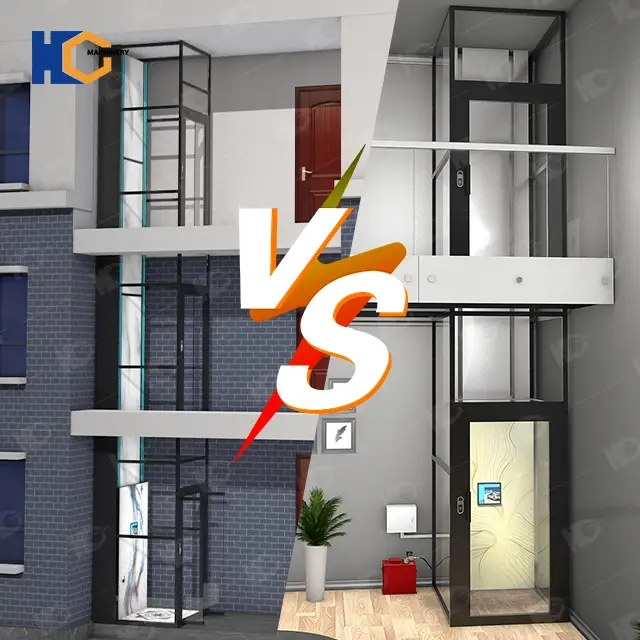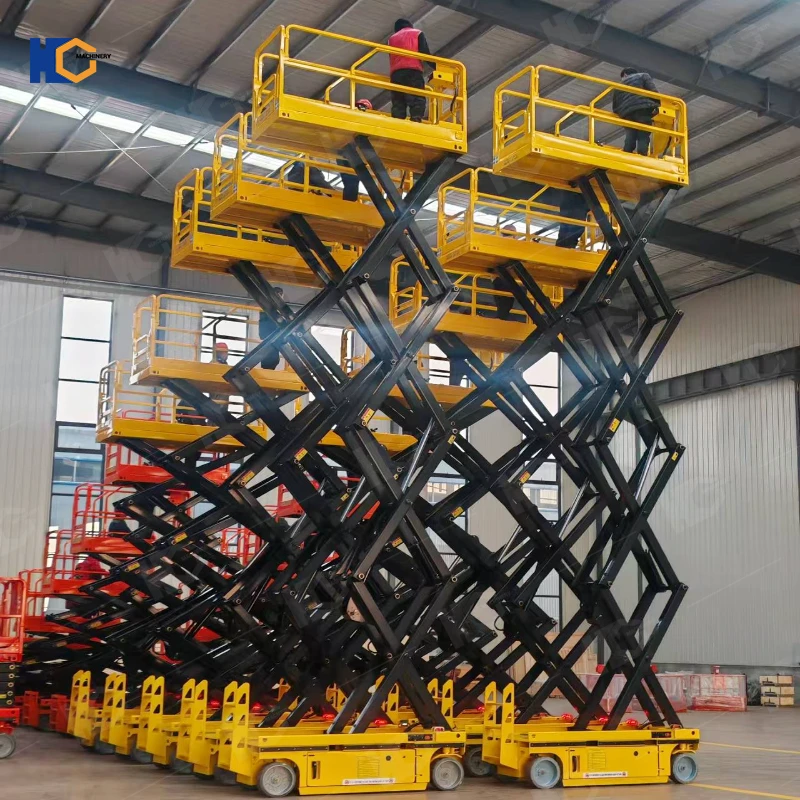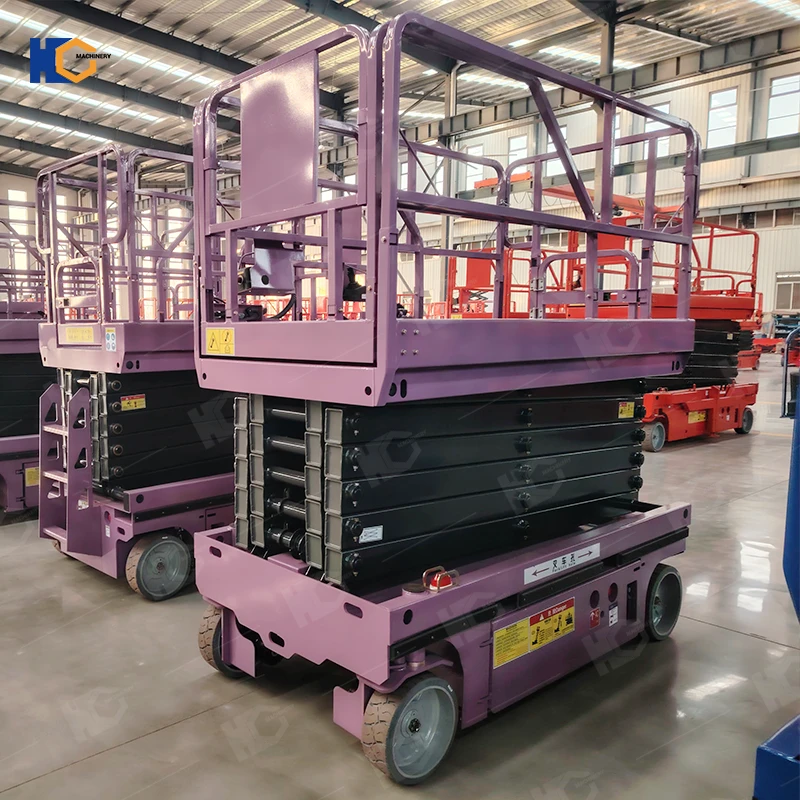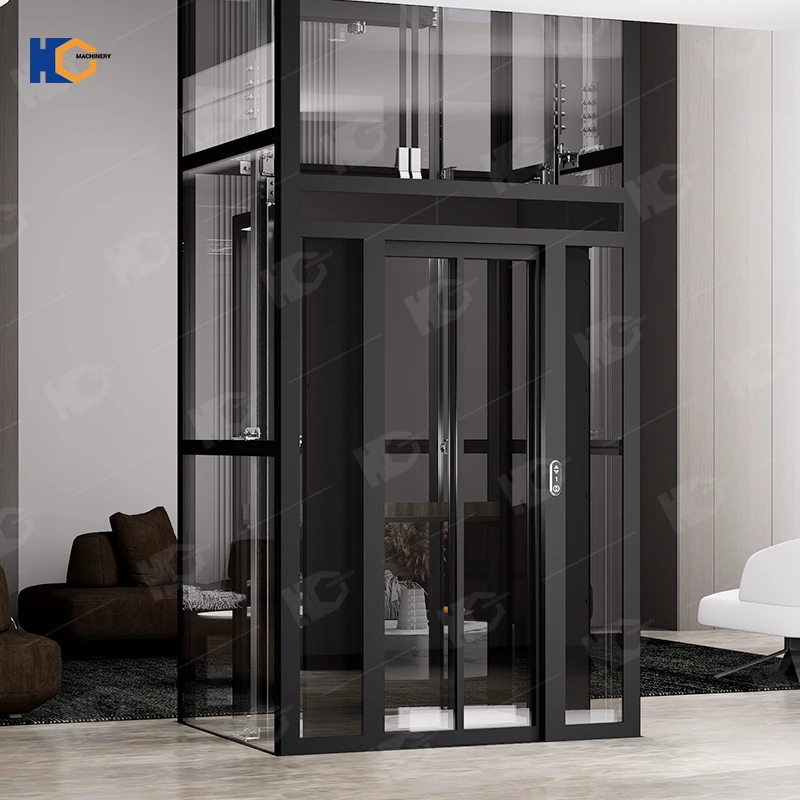Home elevators have transitioned from luxury amenities to practical home additions, offering convenience and accessibility for multi-story living. Once primarily found in high-end residences, these residential lifts are now increasingly popular among homeowners looking to improve mobility, accommodate aging family members, or simply enhance property value. With advancements in compact designs and energy-efficient technology, modern home elevators are more affordable and versatile than ever, making them a viable option for both new constructions and retrofits.
Understanding the cost differences between 2-story and 3-story home elevators is crucial for homeowners planning an installation. While both options provide the same core functionality, key factors such as travel distance, structural modifications, and additional mechanical requirements significantly impact overall pricing. A 2-story elevator typically requires less complex installation and lower upfront costs, whereas a 3-story system involves extended shaft construction, stronger drive mechanisms, and potentially higher permitting fees. Without proper cost analysis, homeowners risk underestimating expenses or selecting an elevator that doesn’t meet long-term needs.
The purpose of this comparison is to provide a clear breakdown of pricing, installation variables, and ongoing expenses for 2-story and 3-story home elevators. By examining key cost drivers—such as elevator type, customization, and maintenance—this guide will help homeowners make informed decisions based on their budget, space requirements, and future accessibility needs. Whether you're evaluating a basic lift or a high-end model, understanding these differences ensures a cost-effective and functional investment.
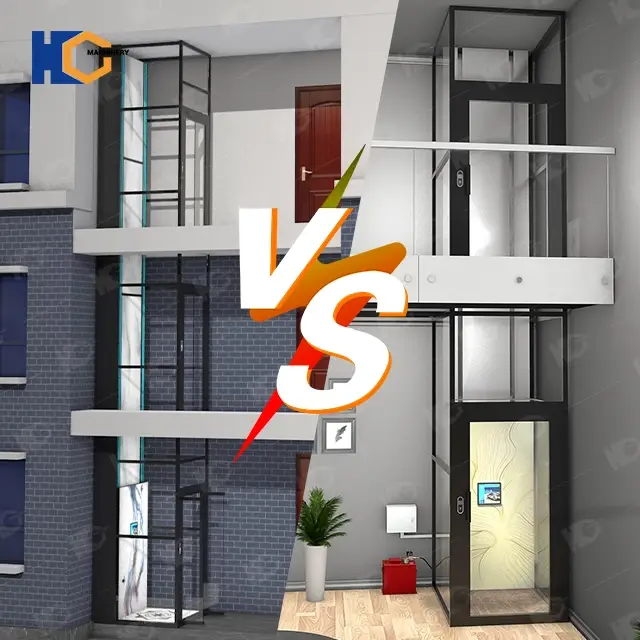
Factors Affecting Home Elevator Costs
When planning a home elevator installation, understanding the key factors that influence pricing is essential for making an informed decision. Costs can vary dramatically based on several critical elements, from the type of elevator system to installation requirements and customization options. Below, we explore these factors in detail to help homeowners anticipate expenses and choose the best solution for their needs.
1. Type of Elevator
The elevator mechanism you select significantly impacts both upfront and long-term costs. The most common residential elevator types include:
Hydraulic Elevators: These use a piston system and hydraulic fluid to move the cab, making them quiet and smooth. While reliable, they require more space for machinery and periodic fluid maintenance. Prices typically range from $25,000 to $50,000 for a 2-story installation.
Traction (Cable-Driven) Elevators: These operate using a counterweight and pulley system, making them more energy-efficient than hydraulic models. They are ideal for taller homes (3+ stories) and cost between $30,000 and $60,000, depending on the lift’s height.
Pneumatic (Vacuum) Elevators: A modern, space-saving option that uses air pressure to move the cab. These require no machine room and have a sleek, futuristic design but are limited in weight capacity (usually 2-3 people). Prices range from $35,000 to $75,000.
Screw-Driven Elevators: These use a threaded shaft to lift the cab and are known for their durability. They are mid-range in cost ($20,000–$45,000) but can be noisier than other types.
Each system has different maintenance needs, energy consumption, and space requirements, affecting both initial and long-term costs.
2. Size & Capacity
The elevator’s dimensions and weight capacity play a major role in pricing.
Cab Size: Standard residential elevators typically accommodate 3-6 people (350–1,000 lbs). Larger cabs (e.g., wheelchair-accessible models) require reinforced structures and wider shafts, increasing costs by $5,000–$15,000.
Weight Limit: Higher-capacity models (over 1,000 lbs) need stronger motors and support systems, adding $3,000–$10,000 to the total cost.
3. Customization & Features
Luxury finishes and smart technology enhance comfort but also raise expenses:
Interior Finishes: Basic stainless steel or laminate panels cost less, while premium wood, glass, or custom designs add $2,000–$10,000.
Smart Controls: Touchscreen panels, remote operation, and home automation integration increase costs by $1,500–$5,000.
Lighting & Accessibility Features: LED mood lighting, voice activation, and braille buttons add $500–$3,000.
4. Installation Complexity
Structural modifications and labor significantly affect pricing:
Shaft Construction: Retrofitting an existing home requires cutting through floors and reinforcing walls, costing $10,000–$30,000 versus $5,000–$15,000 for new constructions.
Permits & Inspections: Local building codes may require safety tests and permits, adding $1,000–$5,000.
Electrical & HVAC Adjustments: Some elevators need dedicated power lines or climate control, increasing costs by $2,000–$7,000.
5. Brand & Quality
Well-known brands (e.g., ThyssenKrupp, Otis, Savaria) offer reliability but at a premium (10–30% higher than generic brands). Budget options may save money upfront but could incur higher maintenance costs.
The total cost of a home elevator depends on a combination of these factors. By assessing your needs—whether prioritizing luxury, space efficiency, or budget—you can make a cost-effective choice that enhances your home’s functionality and value.
Average Cost Breakdown: 2-Story vs. 3-Story Elevators
When comparing home elevator costs, the number of floors served is one of the most significant pricing factors. Let's examine the key differences between 2-story and 3-story installations.
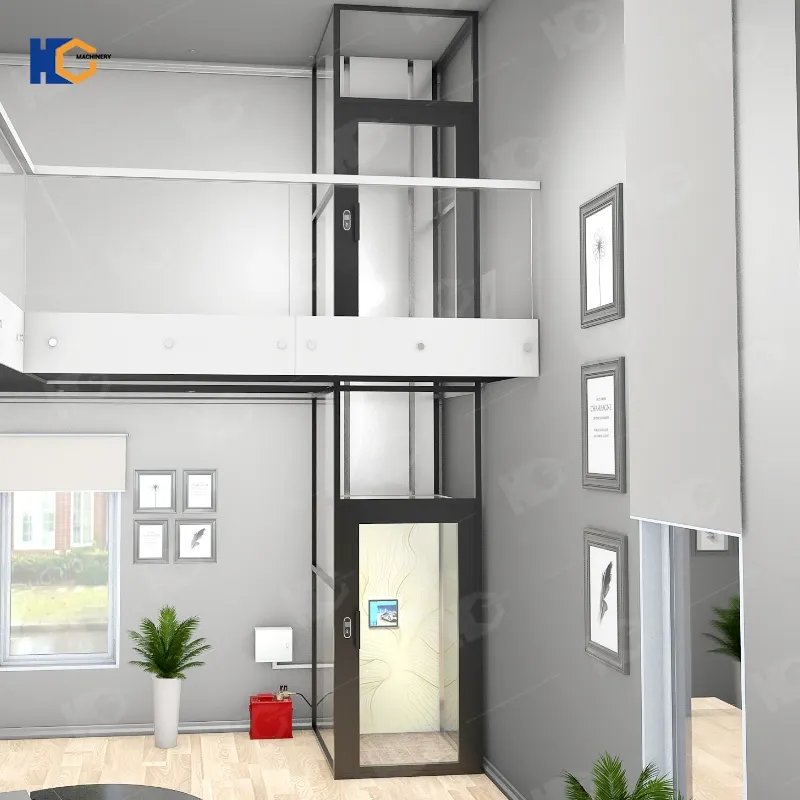
2-Story Home Elevator Costs
The typical price range for a 2-story residential elevator falls between $20,000 and $50,000, with most homeowners spending about $35,000 for a quality mid-range model with standard features.
Key Cost Drivers for 2-Story Elevators:
Type of System: Hydraulic models tend to be most affordable ($20,000-$40,000), while pneumatic/vacuum elevators range $35,000-$50,000
Cab Size: Standard 3-person cab (about 36"x48") vs. larger wheelchair-accessible models
Installation: Retrofitting costs 20-40% more than new construction installations
Basic Features: Automatic doors, standard finishes, and essential safety features keep costs lower
Structural Work: Minimal modifications needed for most 2-story installations
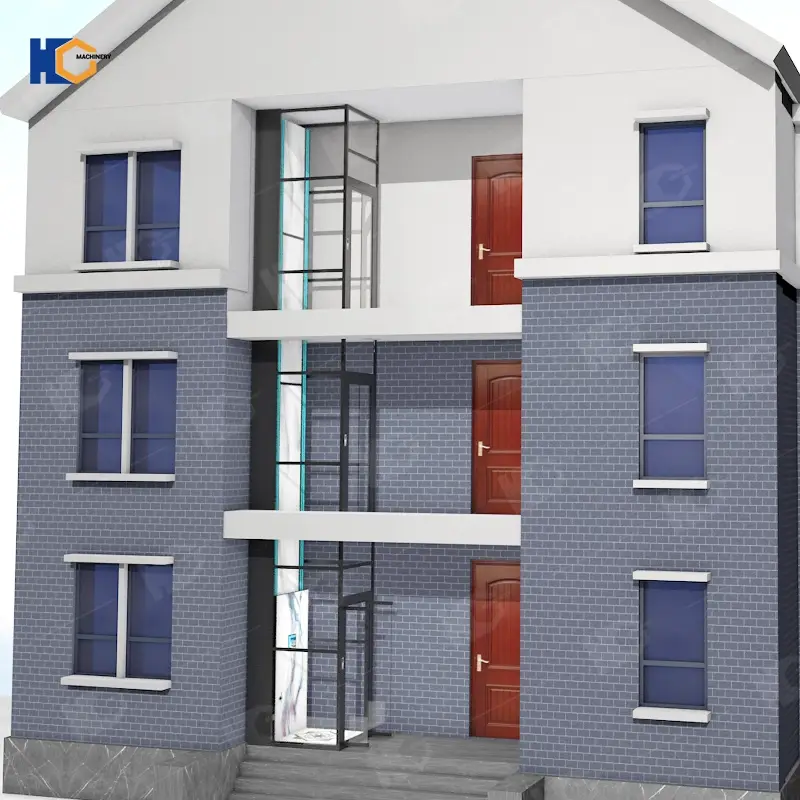
3-Story Home Elevator Costs
For a 3-story home, elevator costs typically range from $30,000 to $70,000+, with an average investment of $45,000-$55,000 for a well-equipped model.
Additional Expenses for 3-Story Elevators:
Increased Travel Distance: Requires more powerful drive systems and longer guide rails (+$3,000-$8,000)
Structural Reinforcements: Additional floor penetration and stronger support beams (+$5,000-$15,000)
Safety Systems: More extensive emergency braking and backup power requirements
Energy Costs: Higher operational expenses due to greater daily use
Maintenance: More frequent servicing intervals for taller lifts
Notable Price Differences:
Traction elevators become more cost-effective for 3-story applications
Permit fees are often higher for taller installations
Luxury finishes and smart features add proportionally more to 3-story costs
Annual maintenance runs $500-$1,000 for 2-story vs. $750-$1,500 for 3-story models
While the base price difference might appear modest, the total installed cost for a 3-story elevator often runs 25-40% higher than a comparable 2-story system when factoring in all additional requirements. Homeowners should carefully consider both current needs and potential future use when deciding between these options.
Home Elevator Cost Comparison Table
| Cost Factor | 2-Story Elevator | 3-Story Elevator | Key Difference |
|---|---|---|---|
| Base Price | $20,000 - $45,000 | $30,000 - $60,000 | +30-50% higher for 3-story |
| Installation | $8,000 - $15,000 | $12,000 - $25,000 | More structural work required |
| Annual Maintenance | $400 - $900 | $700 - $1,500 | More frequent servicing |
| Energy Costs/Year | $100 - $300 | $200 - $500 | Longer travel distance |
| Permit Fees | $500 - $2,000 | $1,000 - $3,500 | Stricter safety requirements |
| Additional Features | +$2,000 - $10,000 | +$3,000 - $15,000 | Higher proportional cost |
| Luxury Upgrades | +$5,000 - $20,000 | +$8,000 - $30,000 | More surface area to finish |
| Structural Mods | $2,000 - $10,000 (if needed) | $5,000 - $20,000 (often required) | Additional floor penetration |
| Total Estimated Cost | $30,500 - $90,000 | $45,000 - $140,000 | 25-40% total cost increase |
Key Takeaways:
Price Premium: 3-story elevators typically cost 25-40% more than comparable 2-story models
Installation Intensity: Requires more structural modifications and longer installation time
Ongoing Costs: Higher maintenance and energy expenses due to increased usage and complexity
Feature Impact: Optional upgrades cost proportionally more for 3-story installations
Value Consideration: The per-floor cost decreases slightly with additional stories
This table reflects real-world pricing trends where 3-story installations often require:
More powerful drive systems
Extended guide rails and cables
Additional safety mechanisms
Larger shaft construction
Increased permit scrutiny
Additional Expenses to Consider for Home Elevators
Beyond the base price and installation, homeowners should budget for several additional costs that impact both short-term and long-term elevator ownership.
1. Electrical & Structural Upgrades
Many homes require modifications to support an elevator:
Electrical Work: Upgrading circuits or adding a dedicated power line ($500–$3,000)
Reinforcement: Strengthening floors, walls, or foundations ($2,000–$15,000)
Shaft Construction: Building an enclosed hoistway if not pre-existing ($5,000–$20,000)
2. Permit Fees & Inspections
Local regulations often require:
Building Permits ($500–$3,000, varies by location)
Safety Inspections ($200–$800 per inspection)
Accessibility Compliance (Additional costs if meeting ADA standards)
3. Ongoing Maintenance & Servicing
Regular upkeep ensures safety and longevity:
Annual Maintenance Contracts ($400–$1,500/year)
Unexpected Repairs (e.g., hydraulic leaks, motor issues; $500–$5,000+)
Part Replacements (Cables, buttons, or sensors over time)
Pro Tip: Get multiple quotes and factor in at least 10–15% extra for unforeseen costs. Proper planning prevents budget overruns and ensures smooth operation for years to come.
Which Home Elevator Option Is Right for You?
Choosing between a 2-story and 3-story home elevator depends on your budget, space, and long-term needs. Below is a detailed comparison to help you decide.
Pros & Cons of 2-Story Elevators
✅ Pros:
Lower Cost: Typically 25–40% cheaper than 3-story models
Easier Installation: Less structural work and shorter travel distance
Lower Maintenance: Simpler mechanics mean fewer service calls
Space-Efficient: Often fits better in compact homes
❌ Cons:
Limited Reach: Only serves two floors (not ideal for tri-level homes)
Lower Resale Boost: Less impactful than a full-home elevator
Pros & Cons of 3-Story Elevators
✅ Pros:
Full-Home Access: Covers all floors, ideal for multi-generational living
Higher Home Value: Adds 5–10% more resale value than 2-story models
Future-Proofing: Better for aging in place or mobility needs
❌ Cons:
Higher Upfront Cost: Base price + installation can exceed $70,000+
Complex Installation: Requires more structural reinforcement
Ongoing Costs: More frequent maintenance and higher energy use
Budget Considerations
2-Story: Best for budgets under $50,000
3-Story: Requires $50,000–$100,000+ (luxury models exceed this)
Financing Options: Some manufacturers offer payment plans
Long-Term Value & ROI
2-Story: Faster payback for accessibility needs, but smaller resale impact
3-Story: Greater luxury appeal and functionality, boosting home value
Final Recommendation:
Choose 2-Story if you need basic mobility help or have budget constraints.
Choose 3-Story if you want full-home access and maximum property value.
Smart Ways to Save on Home Elevator Costs
Installing a home elevator is a significant investment, but strategic choices can help reduce expenses without sacrificing quality or safety. Here are four proven methods to lower costs while still getting a reliable system.
1. Choose a Pre-Fabricated Model
Custom-built elevators can cost 20–40% more than pre-designed models. Opting for a pre-fabricated unit offers several advantages:
Lower Base Price: Standardized designs eliminate custom engineering fees ($5,000–$15,000 savings).
Faster Installation: Modular systems can be installed in days instead of weeks, reducing labor costs.
Predictable Pricing: No surprise charges for design changes or complex modifications.
Best for: Homeowners who want a straightforward, budget-friendly option.
2. Compare Multiple Quotes
Prices vary widely between suppliers. Getting at least 3–5 detailed quotes helps you:
Identify fair market rates (some installers overcharge by 15–30%).
Negotiate better deals (many companies will match competitors’ pricing).
Spot unnecessary add-ons (e.g., excessive customization or over-engineered specs).
Tip: Ask for itemized estimates to compare labor, materials, and permit fees separately.
3. Opt for Essential Features Only
Luxury upgrades quickly inflate costs. Prioritize functionality with these cost-cutting strategies:
Skip High-End Finishes: Choose durable laminate or stainless steel instead of custom wood/glass (+$3,000–$10,000 savings).
Avoid "Smart" Perks: Basic controls work just as well as touchscreens or voice activation (+$1,500–$5,000 savings).
Standardize Dimensions: A smaller cab (e.g., 36"x48") costs less than a wheelchair-accessible model (+$4,000–$8,000 savings).
Best for: Practical homeowners who value affordability over aesthetics.
4. Explore Financing & Incentives
Many homeowners don’t realize financial assistance is available:
Manufacturer Financing: Some brands offer low-interest loans or payment plans.
Medical Tax Deductions: If prescribed for mobility issues, partial costs may be tax-deductible (consult an accountant).
Home Improvement Loans: Credit unions often offer better rates than credit cards.
Tip: Some states offer grants for accessibility modifications—check local programs.
Final Cost-Saving Tips
Retrofit When Possible: Converting an existing closet or stairwell into a shaft saves $5,000–$15,000.
Bundle Services: Hire an elevator company that handles permits and electrical work to avoid markup fees.
Maintenance Plans: Pre-paid service contracts often cost less than emergency repairs.
By combining these strategies, homeowners can save $10,000–$25,000+ on their elevator project while still ensuring safety and reliability.
Conclusion: Making the Right Elevator Choice
Choosing between a 2-story and 3-story home elevator ultimately depends on your budget, home layout, and long-term needs. Key cost differences include:
2-story elevators ($20,000–$50,000) offer affordability and simpler installation but limit accessibility to two floors.
3-story elevators ($30,000–$70,000+) provide full-home access and higher resale value but require greater upfront and ongoing investment.
Final Recommendations:
For budget-conscious buyers or smaller homes, a 2-story elevator delivers essential functionality at a lower cost.
For multi-generational households or luxury properties, a 3-story system maximizes convenience and long-term value.
Before deciding, consult a certified elevator professional for a detailed home assessment and accurate quote. They can identify hidden costs (like structural upgrades) and recommend the most cost-effective solution tailored to your space.
Investing in a home elevator enhances safety, accessibility, and property value—just ensure your choice aligns with both your immediate needs and future plans.
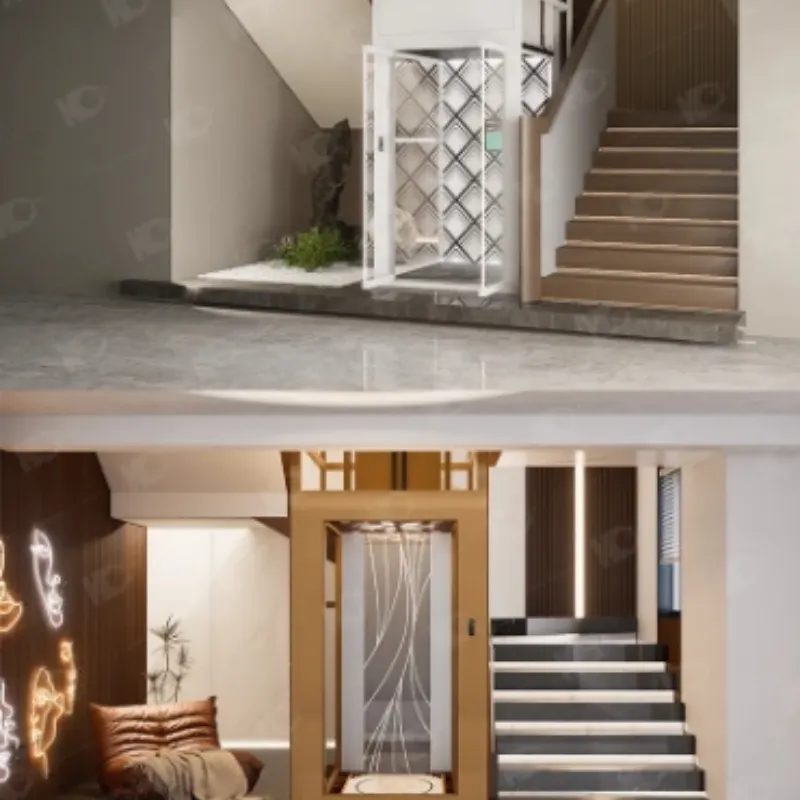
Affordable & High-Quality Home Elevators by JNHC LIFT
At JNHC LIFT, we specialize in manufacturing premium 2-story and 3-story home elevators at unbeatable prices—without compromising safety or performance.
✅ Why Choose Us?
Superior Quality: Reliable, durable elevators built to last
Competitive Pricing: Cost-effective solutions for any budget
Custom Options: Flexible designs to match your home’s style
Expert Support: Professional guidance from selection to installation
Whether you need a compact 2-story lift for easy access or a full 3-story elevator for whole-home mobility, we deliver exceptional value.
Contact us for a free consultation! Let our team help you find the perfect elevator solution for your needs.
